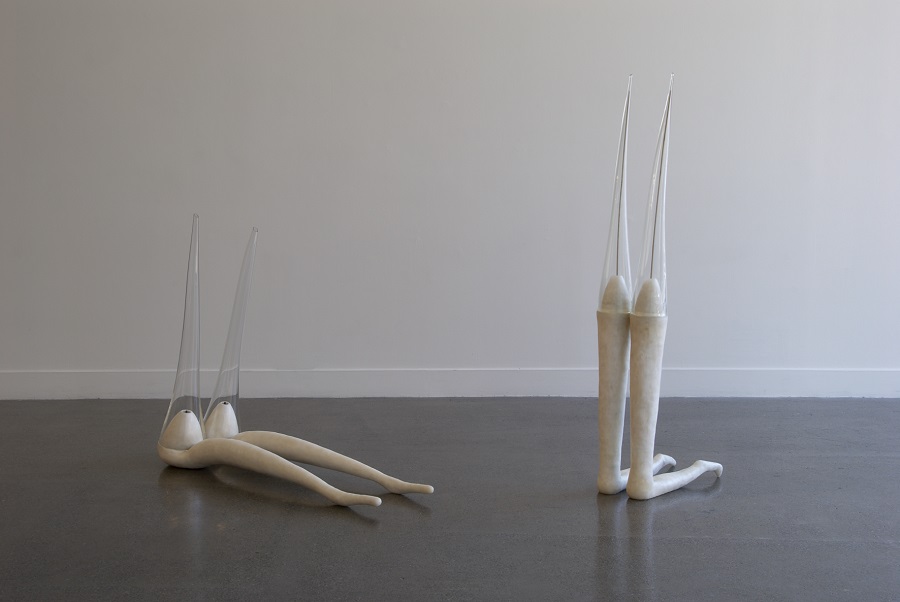We see that creativity in action, we feel the tug–of–war between seduction and repulsion.
BENJAMIN ARMSTRONG (VIC)
Born 1975 Melbourne, Victoria, lives and works Melbourne, Victoria
Benjamin Armstrong’s sculptures often employ wax and glass. The gallery fills with light and colour, sometimes opaque, often transparent. Static objects appear to wriggle, thrust, or be pulled downwards by an unforgiving gravity. Eyeballs stare across at breasts, while tendrils clutch at dark, inviting orifices. We rush to keep up with our own imagination.
Each material is in many ways the opposite of the other, yet when they come together a third state is reached in a way that several commentators have described as “alchemical”. Male and female body parts seem to join effortlessly, both in our heads and on the floor in front of us. But it is not effortless. There is in fact much hard thinking and experimentation behind such skillful creation.
Sliding between dissolution and emergence his work has the same tension and beauty as the sculptures and photographs of Medardo Rosso, and the same familiarity with infinity as Anish Kapoor or Ad Reinhardt. In a recent interview with curator Charlotte Day, Armstrong showed the breadth of his influences through mention of his interest in the two thousand year old Egyptian Fayum portraits, which use wax in their construction, and his fascination with Pukumani burial poles which he saw first hand on the Tiwi Islands in 2004. “Each pole had its own vitality,” he says, “but also acted as a celebrant for the dead. Colour hovered on them in patterns with meanings indiscernible to me....I’m interested in the way Tiwi culture embraces the temporal. They use pigments that flake from the poles and a soft wood that decays back into the earth quickly.” His drawings, especially, are testament to these influences.
Benjamin very much enjoys the physical act of making something (“There is a great wrestle and pleasure for me in making things”), and cites creativity as perhaps being “the core of what it means to be human”. In works such as “Night Together III” (2009), “Tingles” (2007) and “Wharton’s Jelly” (2007) we see that creativity in action, we feel the tug–of–war between seduction and repulsion. We feel we are being admitted to very private places where the phallus and the orifice are united with a certain lightness of being and heaviness of guilt. Yet at other times, as curator Juliana Engberg has observed, “It is possible to imagine that Ben’s sculptural works and drawings reference the oceanic world of tropical seas and coral architecture; the lava forms of the Pacific, the tattoo inscriptions on bark and flesh, and the sand drawings of island cultures. Swirling patterns suggest weather and meteorology; magnetic fields, dunes and contours. But these drawings are, I suspect, psycho–geographies.”
Text by Dr Peter Hill, artist and writer and Adjunct Professor of Fine Art at RMIT University, Melbourne.
2011 Anne & Gordon Samstag International Visual Art Scholarship
1996 Bachelor of Fine Arts, Victorian College of the Arts, Melbourne

